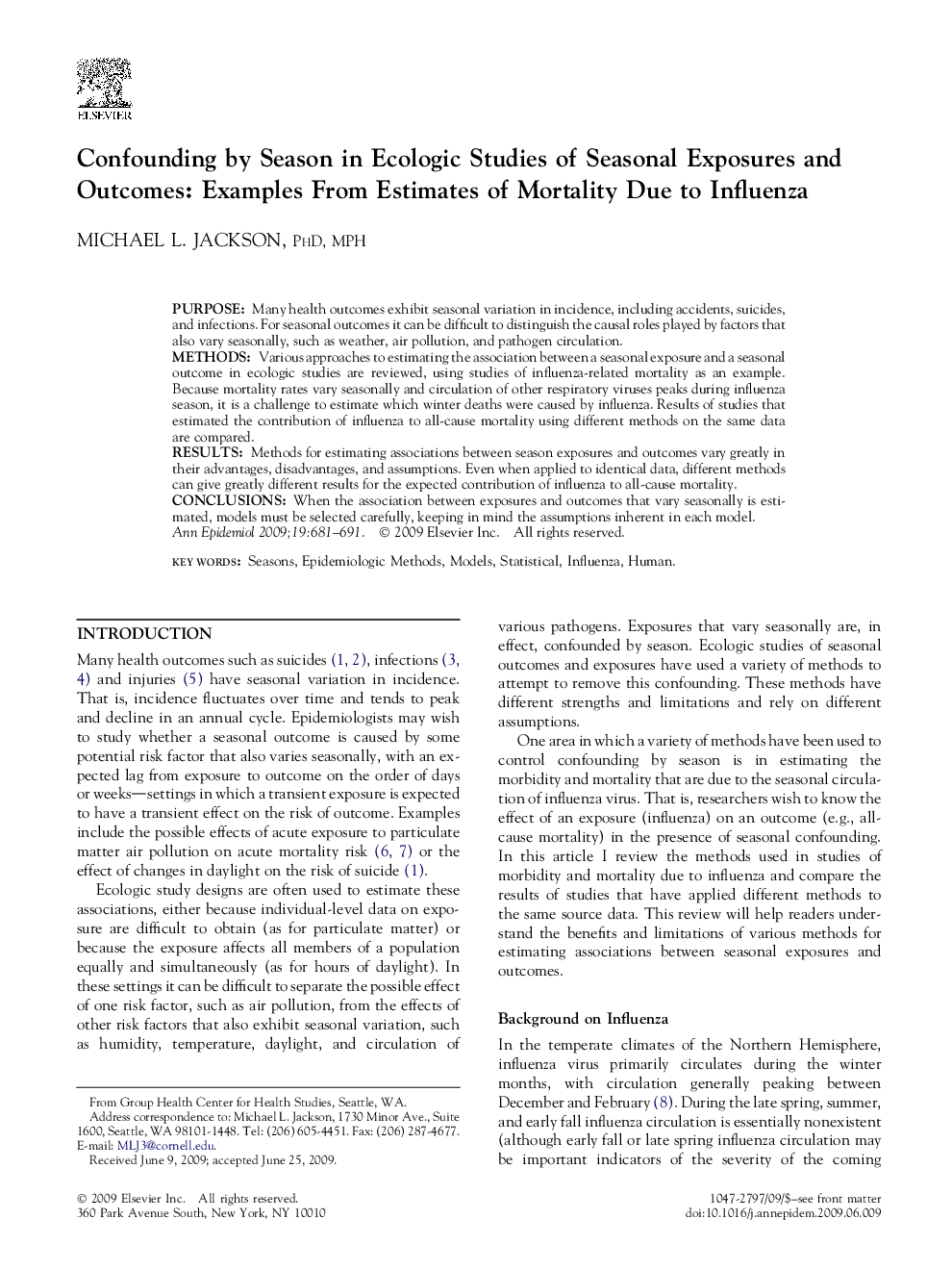| Article ID | Journal | Published Year | Pages | File Type |
|---|---|---|---|---|
| 3444859 | Annals of Epidemiology | 2009 | 11 Pages |
PurposeMany health outcomes exhibit seasonal variation in incidence, including accidents, suicides, and infections. For seasonal outcomes it can be difficult to distinguish the causal roles played by factors that also vary seasonally, such as weather, air pollution, and pathogen circulation.MethodsVarious approaches to estimating the association between a seasonal exposure and a seasonal outcome in ecologic studies are reviewed, using studies of influenza-related mortality as an example. Because mortality rates vary seasonally and circulation of other respiratory viruses peaks during influenza season, it is a challenge to estimate which winter deaths were caused by influenza. Results of studies that estimated the contribution of influenza to all-cause mortality using different methods on the same data are compared.ResultsMethods for estimating associations between season exposures and outcomes vary greatly in their advantages, disadvantages, and assumptions. Even when applied to identical data, different methods can give greatly different results for the expected contribution of influenza to all-cause mortality.ConclusionsWhen the association between exposures and outcomes that vary seasonally is estimated, models must be selected carefully, keeping in mind the assumptions inherent in each model.
